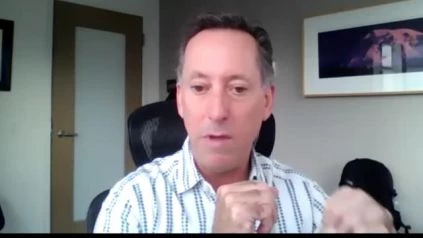John Pagel, MD from the Swedish Cancer Institute & CLL Society Inc. discusses the ASH 2020 Abstract – 127 Clonal Dynamics after Venetoclax-Obinutuzumab Therapy: Novel Insights from the Randomized, Phase 3 CLL14 Trial.
Context
Minimal residual disease (MRD) measurement is a proven and sensitive prognostic method for assessing the depth of response during and after chronic lymphocytic leukemia (CLL) treatment and for understanding the post-treatment dynamics of the disease. It is important to retrace these kinetics to understand which group of patients, despite the initial MRD response, is at risk of relapsing. To this end, an overview of the clonal growth trends in patients treated in the CLL14 trial is given here.
Methodology
In total, 432 patients were randomized to receive chlorambucil or venetoclax with previously untreated CLL and co-existing conditions (216 patients per arm) before completion of cycle 12 (at 28 days) and for the first 6 cycles in combination with obinutuzumab. Progression-free survival (PFS) was the primary endpoint; the secondary endpoint was MRD. MRD was evaluated by ASO-PCR and by next-generation sequencing, as stated here (Adaptive clonoSEQ Assay, cut-off: 10-4, 10-5, and 10-6). The close assay quantification limit is less than 10-6. Peripheral blood (PB) samples are obtained every 3 to 6 months until 9 years from the last patient enrolled; the longest follow-up MRD sample for this study was from 24 months after completion of treatment.
A patient-specific clonal growth rate model has been developed: the level of MRD at t is defined as MRD(t) = λ0 x 10μt, where λ0 is the baseline MRD (i.e. MRD at end of treatment (EoT)) and μ is the parameter of growth rate. Shift (1/μ) x log10 (λ1/λ0) was assumed for the interval between MRD status λ0 and new MRD state λ1. Each patient was fitted with an exponential regression model to estimate each respective λ0 and μ, by which the doubling time of the patients’ MRD clone was determined. In relation to the intention-to-treat population, data are reported; p-values are exploratory only. Only patients with at least two MRD examinations after EoT and who had not encountered PD before EoT was included for modeling.
Outcomes
Two months after completion of treatment (follow-up month 3), 40% (7%) of patients in the Ven-Obi arm (Clb-Obi arm) had uMRD levels <10-6, 26% (13%) <10-6 and <10-5, 8% (14%) <10-5 and <10-4, 5% (21%) <10-4 and <10-2, and 3% (26%) <10-2 (Figure A).
Most patients (56%) who had undetectable levels of MRD (uMRD) at EoT already had levels of uMRD at cycle, i.e. after completion of Ven-Obi care. MRD response deepened in 25 percent of Ven-Obi treated patients after 6 cycles of venetoclax monotherapy continued (Figure B).
Patients in the Ven-Obi arm with MRD levels ⇠10-5 had a 2-year PFS after EoT of approximately (approx.) 93 percent in a PFS landmark study after EoT, while patients with observable MRD >10-2 had a 2-year PFS of approx. Thirty-seven percent (Figure D).
For 123 patients in the Ven-Obi arm and 143 patients in the Clb-Obi arm, patient-specific clonal growth rates were calculated (Figure C). Of note, 38 patients in the Ven-Obi arm and 4 patients in the Clb-Obi arm had MRD results below the quantification assay limit (LOQ), showing the most profound response beyond the sensitivity of the assay. These patients were not included as the growth rate for those very deep responders could not be reliably measured.
In the Ven-Obi arm, the average clonal growth rate (n=123) was μ = 0.0034 (95 percent CI: 0.0030-0.0038), resulting in an MRD doubling time of approx. 89 days (95 percent CI: 79-102) and a rise of 1 with the log10 scale of the MRD clone size within approx. (95 percent CI: 263-337) 296 days (Figure E). μ was 0.0042 (95 percent CI: 0.0038-0.0047) for patients in the Clb-Obi arm (n=143), leading to a doubling of approx. 71 days (95 percent CI: 65-79) and a rise of 1 with the log10 scale of the MRD clone size within approx. 237 days — 237 days (95 percent CI: 215-263). In the Ven-Obi arm, the average growth rate was lower compared to the Clb-Obi arm (p=0.0057).
Growth rate trend studies are currently being performed within different biological and clinical risk groups as well as genetic subgroups and will be discussed at the conference.
Findings
This study shows that individual clonal growth rates can be used after a fixed-duration procedure to estimate the MRD doubling time. After Ven-Obi, clonal growth was lower than after Clb-Obi, suggesting more successful MRD eradication and Ven-Obi clonal growth modulation. No clonal growth was measurable during observation in a significant subgroup of patients treated with Ven-Obi, indicating the most profound remissions.

